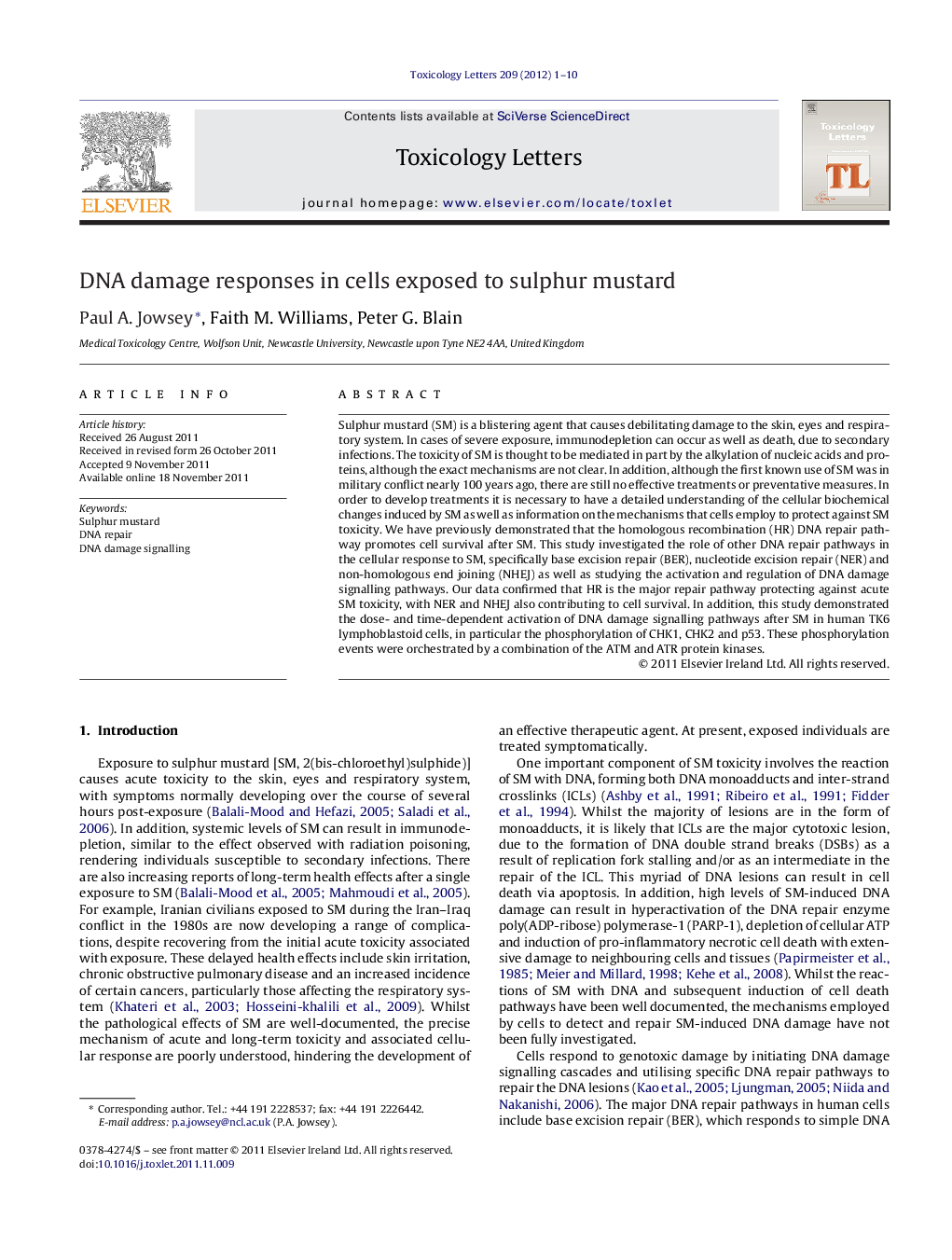| Article ID | Journal | Published Year | Pages | File Type |
|---|---|---|---|---|
| 2599830 | Toxicology Letters | 2012 | 10 Pages |
Sulphur mustard (SM) is a blistering agent that causes debilitating damage to the skin, eyes and respiratory system. In cases of severe exposure, immunodepletion can occur as well as death, due to secondary infections. The toxicity of SM is thought to be mediated in part by the alkylation of nucleic acids and proteins, although the exact mechanisms are not clear. In addition, although the first known use of SM was in military conflict nearly 100 years ago, there are still no effective treatments or preventative measures. In order to develop treatments it is necessary to have a detailed understanding of the cellular biochemical changes induced by SM as well as information on the mechanisms that cells employ to protect against SM toxicity. We have previously demonstrated that the homologous recombination (HR) DNA repair pathway promotes cell survival after SM. This study investigated the role of other DNA repair pathways in the cellular response to SM, specifically base excision repair (BER), nucleotide excision repair (NER) and non-homologous end joining (NHEJ) as well as studying the activation and regulation of DNA damage signalling pathways. Our data confirmed that HR is the major repair pathway protecting against acute SM toxicity, with NER and NHEJ also contributing to cell survival. In addition, this study demonstrated the dose- and time-dependent activation of DNA damage signalling pathways after SM in human TK6 lymphoblastoid cells, in particular the phosphorylation of CHK1, CHK2 and p53. These phosphorylation events were orchestrated by a combination of the ATM and ATR protein kinases.
► Homologous recombination is the major pathway offering protection against acute SM toxicity. ► Nucleotide excision repair and non-homologous end joining also contribute to cell survival after SM. ► SM causes the activation of DNA damage signalling pathways controlled by the ATM and ATR protein kinases.
